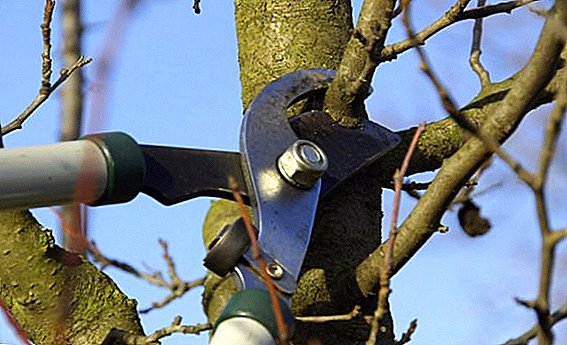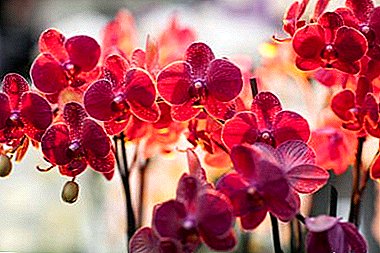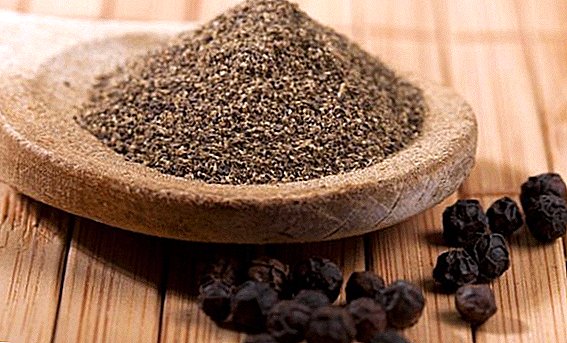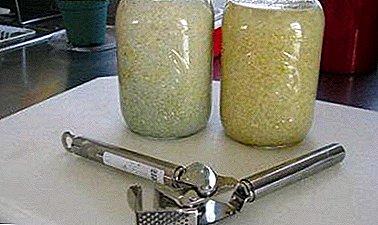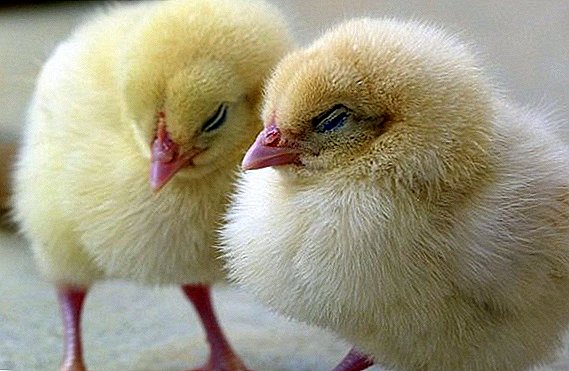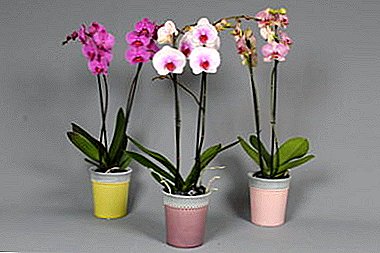
Phalaenopsis is an incredibly beautiful flower that adorns the window sills of thousands of Russian apartments. So you want to houseplants pleased the owners with their flowers as long as possible.
If the orchid does not bloom for a long time at home - this is a reason to be wary. It is necessary to determine the reason for this and do everything so that phalaenopsis again spoiled the hosts with its flowering.
When to expect flowering?
On average, the orchid blooms for about 3 months. Some particularly talented orchid growers manage to extend this period to 5, or even 8 months. Then the plant enters a dormant period gaining strength for new flowering. The cycle of flowering and rest of each plant is different, so there is no exact data on when exactly the plant should release the peduncle and decorate the window.
Proper care of the plant can shorten the rest period as much as possible. Phalaenopsis is able to bloom almost all year round when it receives a sufficient amount of water, nutrients and light, as well as with proper temperature conditions. If we are talking about the first flowering of a young plant, then it does not need to wait earlier than 2 years after planting.
The reasons for the lack of buds
 What to do if the orchid does not bloom? In a house or apartment, it is difficult to recreate the natural habitats of phalaenopsis. but regular care by all rules stimulates the rich and long-blooming orchid.
What to do if the orchid does not bloom? In a house or apartment, it is difficult to recreate the natural habitats of phalaenopsis. but regular care by all rules stimulates the rich and long-blooming orchid.
The reasons for the lack of flowering:
- excessive or insufficient watering;
- the flower was purchased at the end of the flowering period;
- high temperature in the room;
- excess salt in the soil;
- lack of light;
- excess or lack of feeding;
- improper fertilizer.
Do I need to stimulate the plant?
Prolonged lack of flowering is a sign that the plant is experiencing discomfort. Bright flowers signal the health of the orchid and the proper care of it. If the orchid does not bloom for a long time, it just needs to be stimulated.
Problems and Elimination
Due attention from the host for the orchid and care at home contribute to the stimulation of flowering. If the plant does not bloom, there are several reasons.
Diseases
The most common diseases are:
- bacterial blotch - brown spots appear on the leaves;
- black mushrooms promote the formation of black plaque on the leaves;
- powdery mildew - a disease that manifests itself in the appearance of white plaque;
- plant rotwhen the root system and leaves rot.
What do we have to do:
- Remove all affected areas of the plant.
- Apply a special preparation designed to treat a specific type of disease.
- If the plant starts to rot, you need to cut off all damaged areas, change the substrate and the pot, transplant orchid.
Pests
The most common pests of orchids: thrips, scythe, mealybug, whitefly, aphid, mites. Pests live in the leaves and in the substrate. The pest affects not only the frequency and duration of flowering, but also the general condition of the plant.
How to detect the presence of a pest:
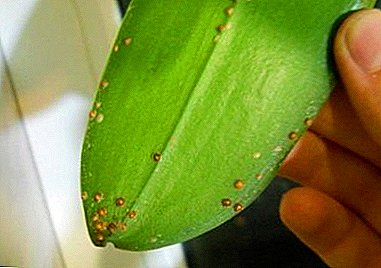 the pot of the plant just bought should be lowered into the water so that the edge of the pot is above the water level: the pests will come out of the substrate outside;
the pot of the plant just bought should be lowered into the water so that the edge of the pot is above the water level: the pests will come out of the substrate outside;- you need to carefully examine the leaves, roots and buds for the presence of silvery paths, tubercles, brown spots, sticky areas, cobwebs and small depressions.
To destroy pests need:
- wash the plant thoroughly with soap and water;
- treat the substrate, plant and roots with a broad-spectrum insecticide solution, repeat in a week.
How to care?
Phalaenopsis is an unpretentious orchid, but it is sensitive to living conditions and care.:
- If the plant is in a too dark place, or in a place with an abundance of direct sunlight, you should not wait for flowering. The orchid should be in a place with sufficient, but not too bright light. If you cannot rearrange the pot from a place with abundant sunlight, it is enough to darken the window a little with special paper or foil.
- It is necessary to properly water the plant - no more than 1 time in 4 days and only in the morning.
- The room should not be too hot and humid - such conditions provoke rotting.
- Do not replant the plant or rearrange the pot without serious need.
- Frequent fertilization does not benefit the plant. It is necessary to bring dressing only in the spring and summer period 1 time in 2 weeks.
How to wake up from a dream?
Phalaenopsis is not the most capricious plant, therefore it’s not so difficult to wake up the orchidas it seems at first glance. There are two main ways to make an orchid awaken from a dream: with the help of artificial drought or with the help of temperature differences. Both methods give the plant a "shake" and induce active flowering. The choice of method is left to the discretion of the owner.
Important: Stimulation is possible only if the plant is completely healthy, but for some reason refuses to bloom. If the orchid has only recently faded, it is very young or sick, it is not recommended to conduct such experiments.
Artificial drought
This method will help at any time of the year and at any stable indoor temperature (not above 30 ° C), plant the orchid and start blooming. The process of awakening a flower will take from 1 to 2 months.
Instruction:
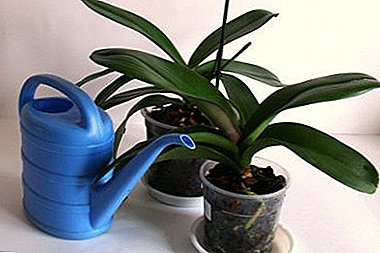 It is necessary to dramatically increase the time intervals between irrigations. You need to wait until the soil and roots become completely dry after the last watering, then refrain from watering for 4-7 days, depending on the temperature in the room, and then water. There is an easier way - to increase the watering intervals by 2 times.
It is necessary to dramatically increase the time intervals between irrigations. You need to wait until the soil and roots become completely dry after the last watering, then refrain from watering for 4-7 days, depending on the temperature in the room, and then water. There is an easier way - to increase the watering intervals by 2 times.- You can not spray the plants in long intervals between watering, this tactic will reduce all efforts to nothing. It is also necessary to abandon fertilizer. No need to feel sorry for the orchid, otherwise the result will not be.
- When the flower spike is formed, you can return to the former watering mode.
- If the period of flowering after stimulation fell in the fall and winter, when the daylight is very short, you need to get a fluorescent lamp. As soon as the peduncle appears, the plant must be illuminated, otherwise the further development may stop.
Temperature difference
This method of stimulation is suitable for most orchids.. Consider its features:
- In the springtime, when the night temperature is set at around 16 ° C, the plant needs to be carried out onto the balcony closer to the open window.
- If it is possible to protect the orchid from direct sunlight, you can keep it on the balcony all day, but if there is no such possibility, you can only carry it out at night.
- In the daytime, phalaenopsis will be warm, at night - in the cool. As a result of such fluctuations, the plant appears forces on the development of the peduncle, the growth of leaves and roots. Usually 10-15 days is enough for stimulation.
The method of temperature difference can also be applied in summer and autumn, but it is in the spring that the greatest results can be achieved. If the plant does not receive proper care, stimulation of flowering will not give good and long-lasting results.
Home care
Proper care during the flowering period determines its duration.. Basics of proper care:
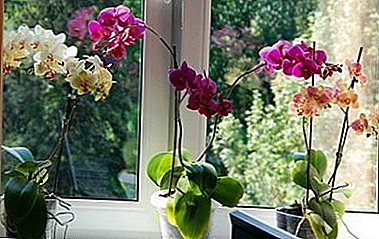 to provide temperature differential: from 20-23 ° С during the day, to 15-17 ° С at night;
to provide temperature differential: from 20-23 ° С during the day, to 15-17 ° С at night;- define a place for the pot and do not move it - the plant does not like permutations and changing the direction of light;
- use special photo lamps in the autumn-winter period, lighting should be directed to the top of the peduncle;
- Orchid pot should be made of transparent smooth plastic, as the roots of the plant also need sunlight;
- For abundant prolonged flowering Phalaenopsis must be fertilized with specialized formulations containing phosphorus and potassium;
- it is good if the window on which the orchid is located has the southern or eastern direction - so the plant will receive more light;
- it is necessary to observe the mode of watering: too frequent watering harms the plant and makes it impossible for it to blossom frequently and continuously.
Conclusion
How often and how homely phalaenopsis will bloom profusely depends primarily on the plant owner. Observing simple tricks of care, the host can easily achieve frequent and long-blooming orchids without the need for stimulation.


 the pot of the plant just bought should be lowered into the water so that the edge of the pot is above the water level: the pests will come out of the substrate outside;
the pot of the plant just bought should be lowered into the water so that the edge of the pot is above the water level: the pests will come out of the substrate outside; It is necessary to dramatically increase the time intervals between irrigations. You need to wait until the soil and roots become completely dry after the last watering, then refrain from watering for 4-7 days, depending on the temperature in the room, and then water. There is an easier way - to increase the watering intervals by 2 times.
It is necessary to dramatically increase the time intervals between irrigations. You need to wait until the soil and roots become completely dry after the last watering, then refrain from watering for 4-7 days, depending on the temperature in the room, and then water. There is an easier way - to increase the watering intervals by 2 times. to provide temperature differential: from 20-23 ° С during the day, to 15-17 ° С at night;
to provide temperature differential: from 20-23 ° С during the day, to 15-17 ° С at night;
